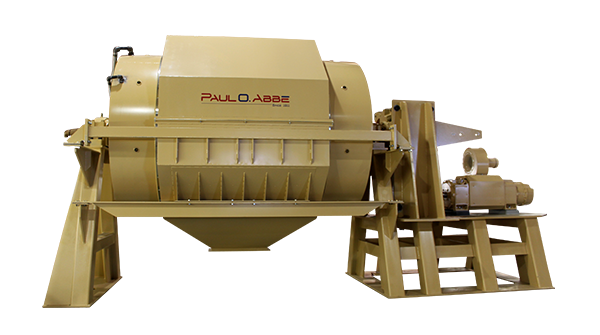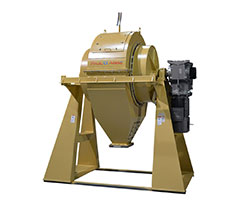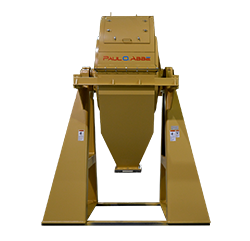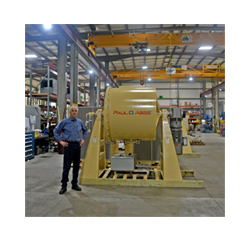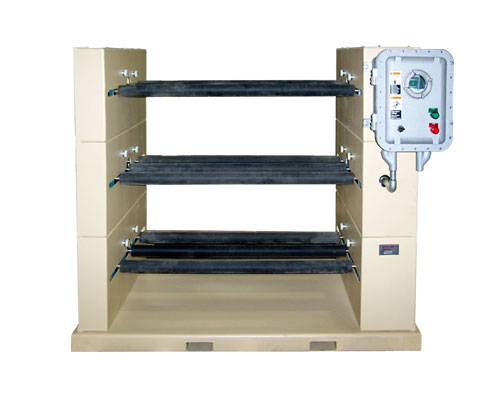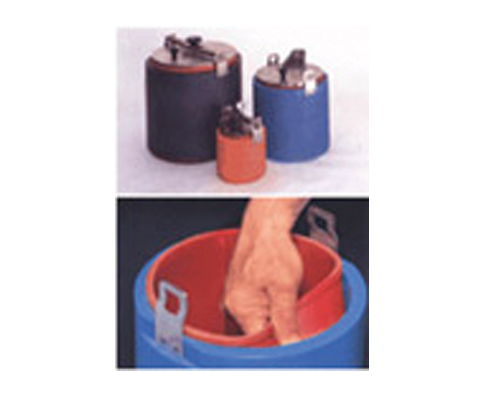Mill Speed - Critical Speed
Mill Speed
No matter how large or small a mill, ball mill, ceramic lined mill, pebble mill, jar mill or laboratory jar rolling mill, its rotational speed is important to proper and efficient mill operation. Too low a speed and little energy is imparted on the product. Too fast and inefficient media movement (known as cataracting) will generate high impact but also greatly increase mill wear. Even faster speed will result in the media centrifuging inside the mill and virtually no milling or movement of media or product will occur. In most cases, the ideal mill speed will have the media tumbling from the top of the pile (the shoulder) to the bottom (the toe) with many impacts along the way. The ideal mill speed is usually somewhere between 55% to 75% of critical speed.
Critical Mill Speed
Critical Speed (left) is the speed at which the outer layer of media centrifuges against the wall.
Second Critical Speed (middle) is the speed at which the second layer of media centrifuges inside the first layer.
nth Critical speed (right) is the speed at which the nth layer of media centrifuges inside the n-1 layer
![]()
Calculating Jar and Jar Rolling Mill Speed
Calculating how fast a Jar needs to spin is a little tricky, but simple one you know the factors. We need to know the inside diameter of the mill, that determine what speed we want, the outside diameter of the mill and the diameter of the rollers. The last two diameters will tell us how fast the roller has to spin to achieve our Jar speed.
![]()
See our Size Reduction Options
Benefits of Tumble Milling: 1. HIGH EFFICIENCY – Due to the relatively slow rotational speed but large mass of media, more of the energy goes into millin
More
Benefits of Tumble Milling: HIGH EFFICIENCY – Due to the relatively slow rotational speed but large mass of media, more of the energy goes into milling and less wasted as heat.
More
Slice Mills™ are identical to the Ball Mills and Ceramic Lined Mills in diameter and design The only difference is that they are as little as 12” in length. Since mill diameter dictates performance and mill length only affects capacity, Slice Mills™ are used to develop or test formulations with little concern for scal
More
Our polyurethane mills utilize a proprietary casting method using a fabricated steel mold placed in the mill cylinder creating a 1” void on all sides. Deaerated polyurethane is poured in the space between the mold and cylinder
More
ABBE Jar Rolling Mills are designed to support and rotate our steel and ceramic jars individually or several at a time. The smallest bench top model, can handle 1 or 2 jars. The largest jar roller can have as many as four levels or tiers and from two to five rolls per tier. A "League of their Own" - These are not hobby shop tumblers or light weight rollers found in laboratory supply catalogs. ABBE Jar Rolling Mills are heavy
More
There are almost as many types and sizes of Abbe Milling Jars as there are applications. Abbe Jars are available in a wide range of sizes and materials. Milling jars are small scale version of the ball mills and are typically used in the laboratory or small scale producti
More

